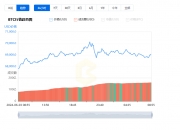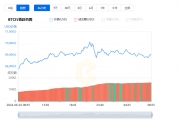比特币是一种加密数字货币,是由中本聪(Satoshi Nakamoto)在2008年提出并于2009年正式诞生的。与传统的法定货币相比,比特币具有许多独特的经济学特征,这些特征使得比特币的经济学本质与传统货币体系有所区别。
Bitcoin is an encrypted digital currency that was introduced by Satoshi Nakamoto in 2008 and officially born in 2009. Bitcoin has many unique economic features compared to traditional legal currencies, which distinguish the economic nature of Bitcoin from the traditional monetary system.
比特币的经济学本质之一是其去中心化的货币体系。传统货币体系由中央银行或政府机构发行和控制,而比特币的发行和控制是通过去中心化的计算机网络来完成的。比特币网络中的参与者称为矿工,他们通过解决复杂的数学问题来验证和记录交易,并获得一定数量的新比特币作为奖励。
One of the economics of Bitcoin is its decentralised monetary system. Traditional monetary systems are issued and controlled by central banks or government agencies, while Bitcoin is distributed and controlled through decentralised computer networks.
比特币的经济学本质之二是其有限的供应量。根据比特币的设计,最多只能发行2100万枚比特币。与法定货币不同,比特币的供应是通过预定的算法和规则进行控制的,而不是由政府机构决定。这意味着比特币的供应是固定的,并且随着时间的推移逐渐减少,从而呈现出稀缺性。
In contrast to the legal currency, the supply of bitcoins is controlled by predetermined algorithms and rules, rather than by government agencies. This means that bitcoins are fixed and gradually reduced over time, resulting in scarcity.
比特币的经济学本质之三是其开放的交易记录,也称为区块链。区块链是一个公开透明的账本,其中记录了所有比特币的交易信息。任何人都可以查看和验证这些交易记录,从而使比特币的交易过程变得透明和可追溯。
The third element of Bitcoin’s economics is its open record of transactions, also known as block chains. The block chain is an open and transparent account that records all bitcoins of transactions.

比特币的经济学本质之四是其去中介化的交易机制。传统货币体系中,交易通常需要经过银行或其他中介机构的验证和处理。而比特币的交易是由网络中的矿工完成的,没有中心化的机构参与其中。这使得比特币的交易过程更加高效和快速,并减少了交易成本。
The fourth element of Bitcoin’s economics is its de-intermediated trading mechanism. In traditional monetary systems, transactions are usually certified and processed by banks or other intermediaries.
由于比特币的供应量有限,并且交易价格受到多个因素的影响,比特币的经济学本质也带来了价格波动和风险投资的特性。比特币的价格可以受到市场需求、投资者情绪、政策法规等多个因素的影响,导致价格的波动性较大。因此,比特币被一些投资者视为一种高风险高回报的投资资产。
Given the limited availability of bitcoins and the multiple factors affecting transaction prices, the economic nature of bitcoins also brings with it the characteristics of price volatility and risky investment. Bitcoins prices can be influenced by a number of factors, such as market demand, investor sentiment, and policy regulation, leading to higher price volatility.
比特币的经济学本质还包括其可分割的单位。比特币可以被划分为小于一个比特币的单位,最小的单位被称为聪(Satoshi)。这使得比特币可以满足不同交易额度的需求,增加了其使用的灵活性。
Bitcoin’s economic nature also includes its severable units. Bitcoins can be divided into units smaller than one bitcoin, the smallest being called Satoshi. This allows Bitcoins to meet the demands of different trading lines and increases the flexibility of their use.
比特币的经济学本质还涉及隐私与安全性。比特币的交易是使用加密技术进行保护的,用户可以通过匿名的地址进行交易,从而保护了个人隐私。此外,比特币网络的分布式特性使得其具有较高的安全性,难以被黑客攻击或篡改交易数据。
Bitcoin’s economic nature also involves privacy and security. Bitcoin transactions are protected by encryption, with users trading through anonymous addresses, thereby protecting personal privacy.
比特币的经济学本质可以归纳为去中心化的货币体系、有限的供应量、开放的交易记录、去中介化的交易机制、价格波动和风险投资、可分割的单位以及隐私与安全性。这些独特的特性使得比特币在传统货币体系之外形成了一种新的经济模式,并为全球范围内的用户提供了一种新的支付和投资工具。
The economic nature of Bitcoin can be summarized as a decentralized monetary system, limited supply, open trading records, de-intermediated trading mechanisms, price volatility and risk investments, segregated units, and privacy and security. These unique features have enabled Bitcoin to develop a new economic model outside the traditional monetary system and to provide users worldwide with a new instrument for payment and investment.
注册有任何问题请添加 微信:MVIP619 拉你进入群

打开微信扫一扫
添加客服
进入交流群




















发表评论